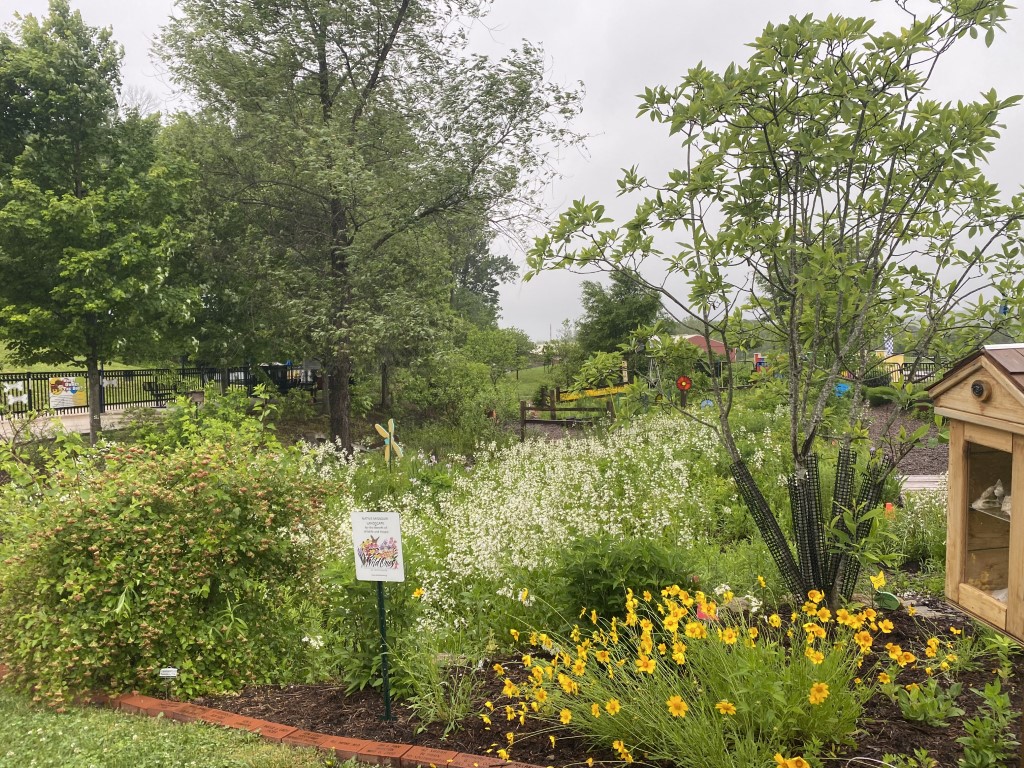 Written by Betty Struckhoff, Chapter member
Written by Betty Struckhoff, Chapter member
Photos by Betty Struckhoff and Tessa Wasserman
Did you know?! The National Museum of Transportation is home to the Pollinator Junction – a Native Garden of Excellence, and one of the first designated as such by Grow Native! at the inception of the program in 2021. For more about this garden, which Wild Ones St. Louis helped fund, visit the Grow Native! Gardens of Excellence project page.
But there’s more!
While the Museum draws visitors from all over the world for its extensive collection of trains, automobiles, aircraft, boats and other transportation artifacts, and has recently been designated #4 on USA Today’s list of Best Open Air Museums, there is also a surprising bounty of native landscaping.
Beginning in 2007, native landscaping enthusiasts from many groups in the St. Louis area have developed a wealth of native plantings throughout the museum property. The main entrance driveway includes a planted median which attracts bees and butterflies throughout the blooming season. Visitors park their cars amid parking lot islands bursting with native growth. Just past the entry building, they can explore the Pollinator Junction garden with interesting painted rocks and other features to engage children. (And kids enjoying the indoor Major Lee Berra Creation Station where they can spy birds and butterflies attracted to plantings and feeders just outside big windows.)
In the fall of 2022, a new garden train was installed behind the original entry building for the museum, known as Barrett Station. It includes native ferns and wildflowers
Anyone with the foresight to bring a picnic lunch can eat it at tables near a magnificent rain garden. It collects runoff from the parking lot and filters it before it enters a small pond, a magnet for waterfowl as well as the occasional beaver. A volunteer group of Spire employees has created a wide gravel and flagstone path through the garden, making it very accessible.
The rest of the campus has plantings we volunteers call “the zigzag hill”, the “Roberts Building ground covers” and more. In the not so cultivated areas, we know where to find wild blackberries, persimmons in the fall and prickly pear cactus fruit. (Sorry, those are secrets.)
Wild Ones has been a significant part of all of this. Member Tessa Wasserman has overseen the maintenance of the delightful Pollinator Junction for over six years. Tessa’s crew of volunteers includes Master Naturalists and others.
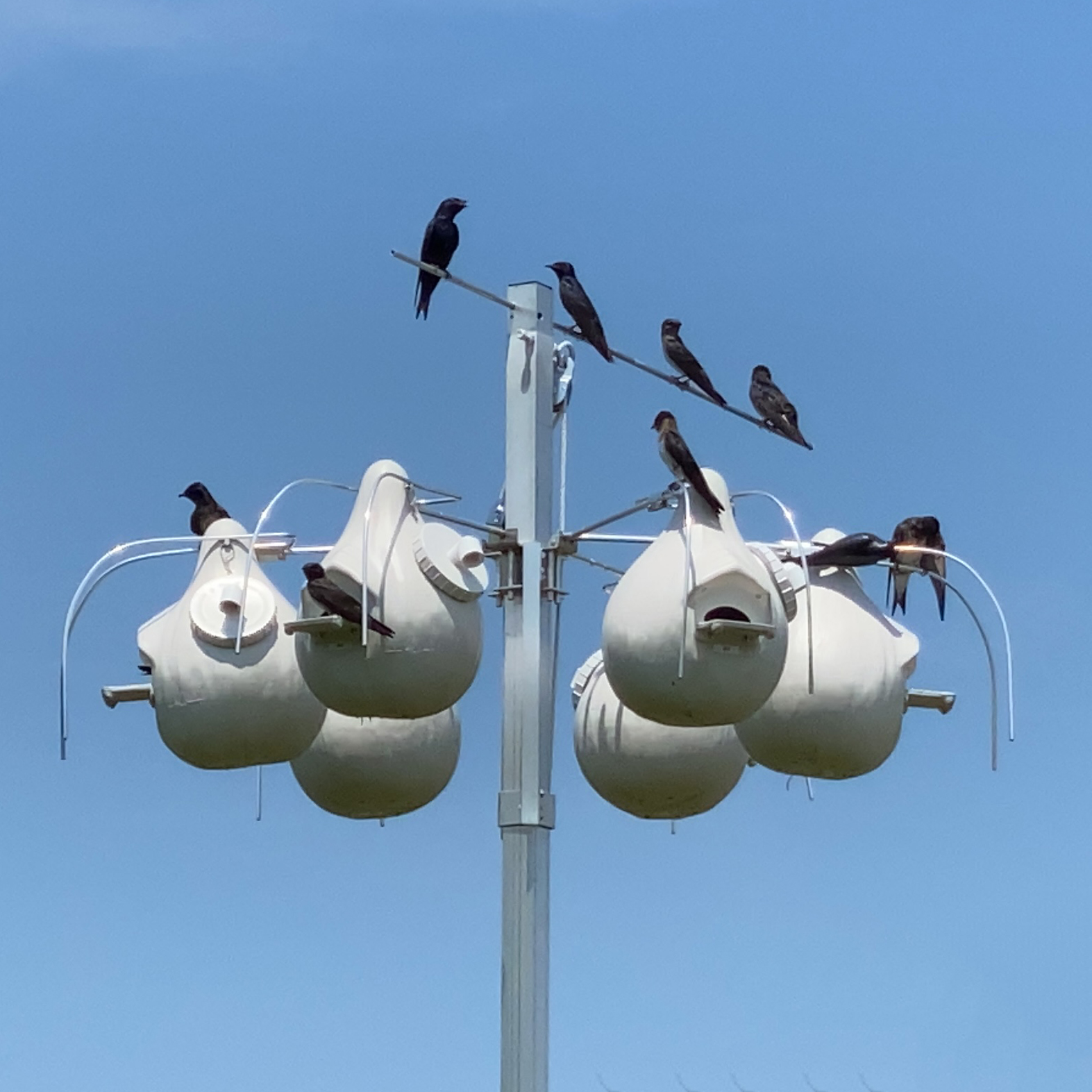 Tessa has also added special touches to the grounds, such as a purple martin hotel near the rain garden. The purple martins feast on dragonflies and other insects thanks to the native gardens and pond. There are two units with 12 gourds where 57 babies fledged in 2023. Finally, there are 6 bluebird houses which all had successful nests in 2023.
Tessa has also added special touches to the grounds, such as a purple martin hotel near the rain garden. The purple martins feast on dragonflies and other insects thanks to the native gardens and pond. There are two units with 12 gourds where 57 babies fledged in 2023. Finally, there are 6 bluebird houses which all had successful nests in 2023.
Wild Ones member and Master Naturalist Diana Miller oversees the maintenance of the rain garden, parking lot islands and other parts of the campus. She sometimes helps coordinate volunteer groups such as some Home Depot employees who last fall eradicated bush honeysuckle and Callery pears around the lake below the rain garden. The cleared areas were seeded with seed collected around campus and packets from Wild Ones St. Louis members’ November seed exchange.
Wild Ones grants have supported the creation of the Pollinator Junction and other plantings at the museum. Our president, Marsha Gebhardt, contributed plants from her own yard for a beautiful shady area. Wild Ones members volunteered for a honeysuckle sweep some years ago and we have gathered at the museum for a scavenger hunt – finding specific plants based on a little known fact for each.
As a volunteer at the museum for many years, I can attest it is not all a bed of roses. There have been hits and misses. Some things that didn’t go as planned:
- The 2007 planting of prairie plants on a west facing hillside has proven difficult to manage. The original defined beds were constantly invaded by non-native warm season turfgrass (aka Bermuda grass). Some plants did not thrive, as we learned the water table was much higher than we imagined. This area has been allowed to grow in a naturalized manner rather than the more formal display that was originally intended.
- A project funded in 2018 by Wild Ones to demonstrate the use of native ground covers also highlights the importance of understanding the conditions. There is generally more shade and more moisture than we expected. (Credit yours truly for this mistake.) Prairie dropseed and Missouri primrose simply refused to thrive. We were able to relocate these and find other plants better suited for the original site.
But there are plenty of bright spots:
- The “prairie hillside” has provided a bounty of native volunteers for the parking lot islands and other areas. Its bounty has also shown up in our chapter’s annual fall seed exchange. The islands can be showstoppers and are relatively easy to maintain.
- The ever-helpful Scott Woodbury introduced us to using native annuals to get some showy flowers in the first year of a new bed, while the perennials were slowly getting established. His gift of seeds from Shaw Nature Reserve gave us showy Cleome in a parking lot island, with the bonus of hummingbird moths! Helen’s Flower continues to grace the “zigzag hill”, reseeding each year along the edge of the sidewalk.
- Pollinator Junction is a wonder-full success. It is managed rather intensively to provide a demonstration of plants that support pollinators and includes educational materials for adults and kids.
- The rain garden is a magical place. It is often filled with damsel and dragonflies, butterflies and birds. If we work into November, we may encounter a fairyland of frost in the morning or a small flock of bluebirds enjoying snacks.
- In the ground cover demonstration area, our shade garden thrives. Another part of it is a very dry, part-shade area where Shaw Nature Reserve’s contribution of Pennsylvania sedge is looking great.
It is always rewarding when visitors show their appreciation for the plants. A favorite of mine came from a young mom with her son – “He loves to come here for the trains, and I love to come for the plants.”
Museum Director Terri McEachern has commented that she is delighted when visitors mention the native plantings in their online reviews. “It’s part of who we are” she notes, and she is lavish in her praise of the staff and volunteers who keep it all going.
St. Louis Wild Ones will gather at the museum on a Saturday in October. If you are a member, watch for further details. You may want to visit the museum before then to see the landscape in different seasons.
If you are interested in volunteering, please contact Tessa (tesswass4@gmail.com) or Diana (diana.miller3m@gmail.com).

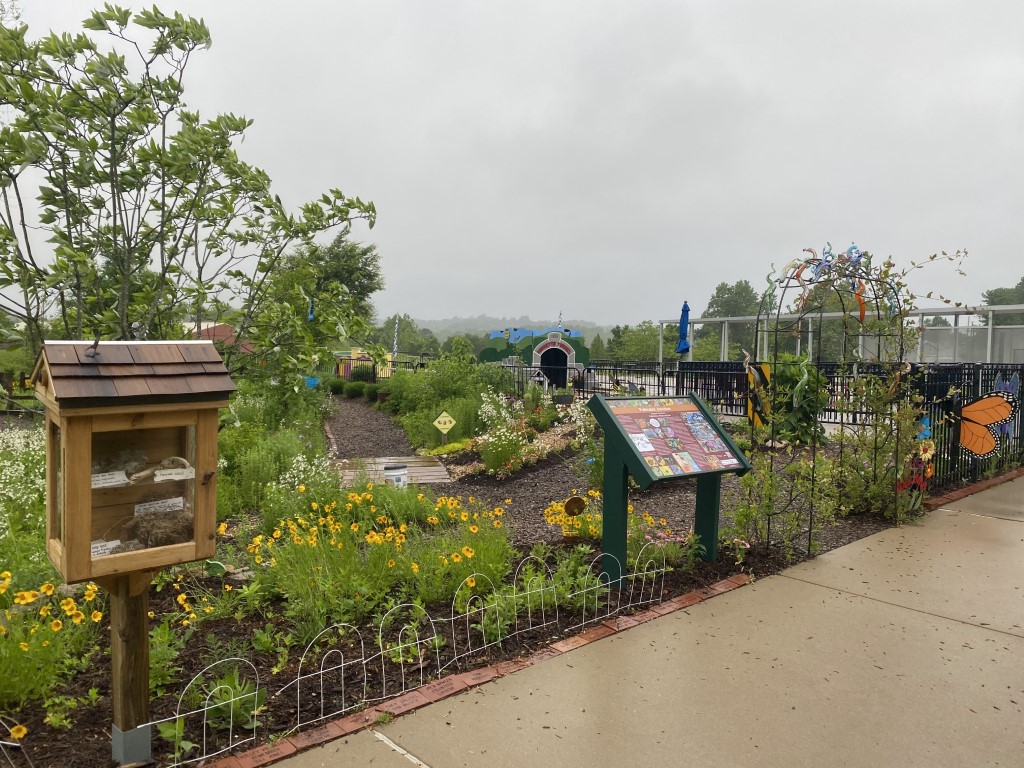
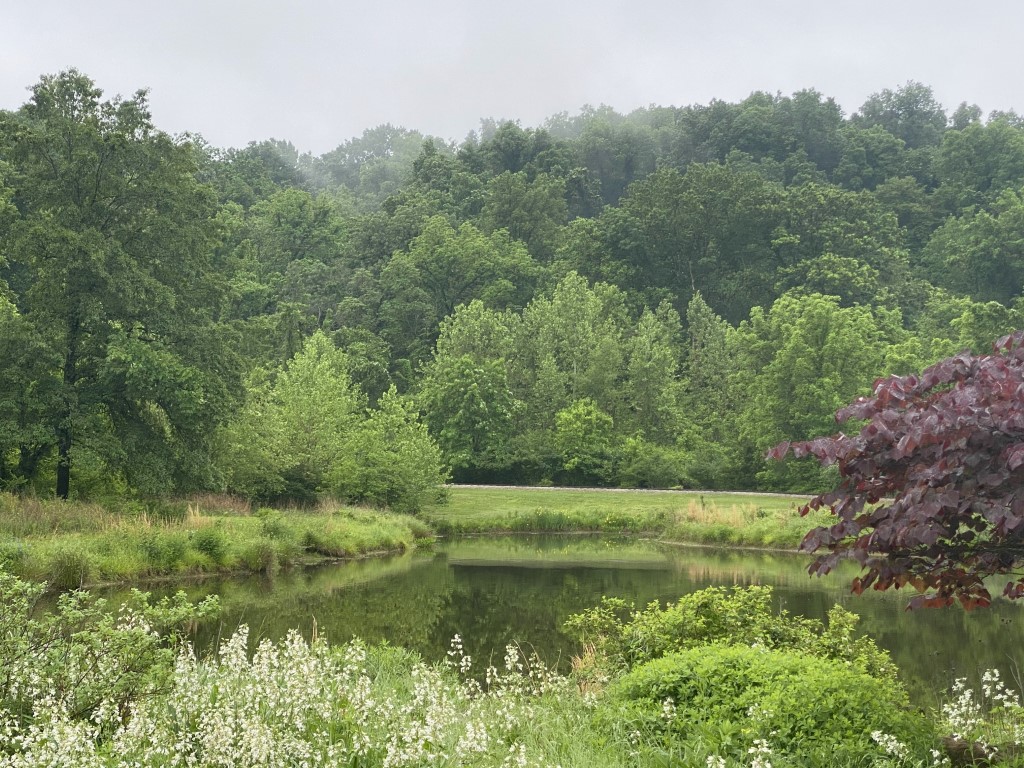
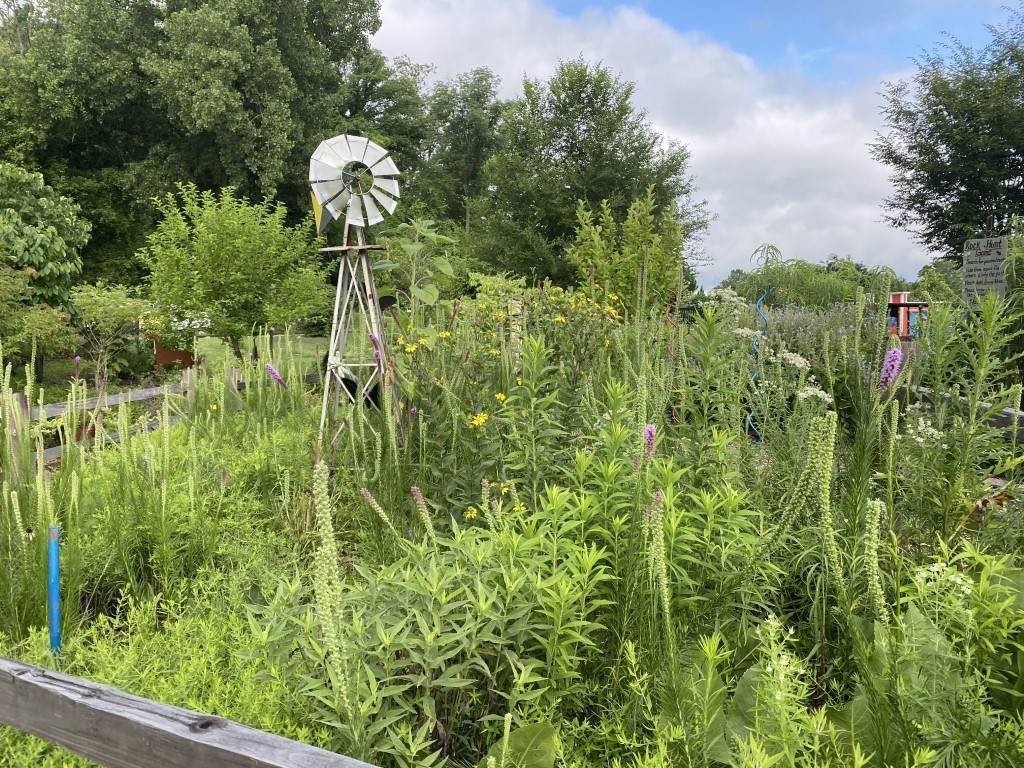
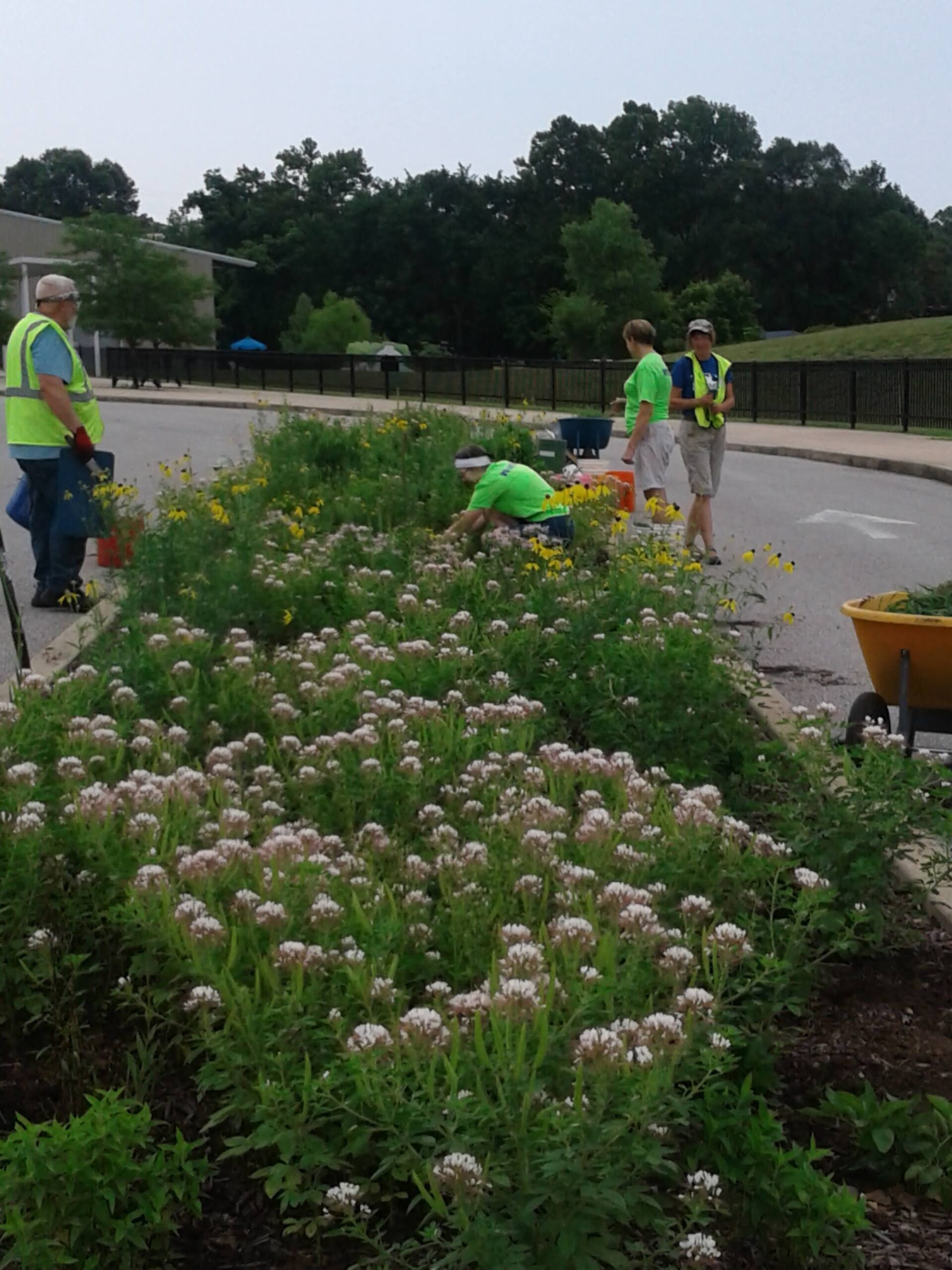
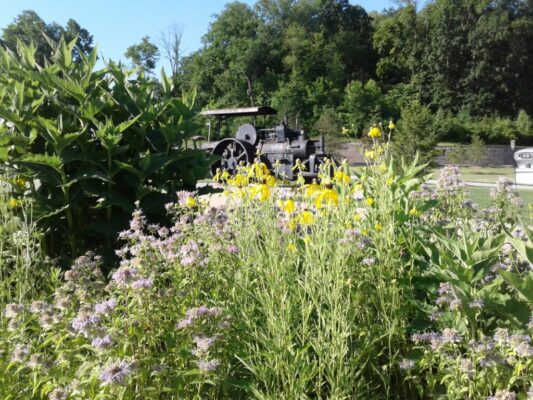

Thanks Betty and Tessa
Nice article! I volunteered in the museum gardens for 5 years. It is indeed a magical place full of wildlife!